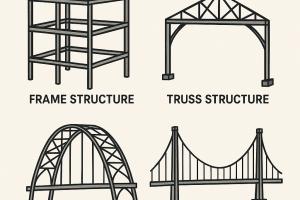Shear Area and Bearing Area in Steel Structures: Key Factors for Structural Design and Analysis
Shear Area:
Shear area refers to the portion of a structural element that is subjected to shear forces. In steel structures, shear forces act perpendicular to the longitudinal axis of the member and cause deformation or failure by sliding or shearing the material along the shear plane. The determination of shear area is crucial in calculating shear stresses and evaluating the structural integrity of the member.
The shear area depends on the specific shape and configuration of the structural element. In common steel sections, such as beams or columns, the shear area is typically calculated based on the cross-sectional shape. For example, in rectangular sections, the shear area is determined by the width and the effective depth of the section.
It is important to note that the shear area is different from the total cross-sectional area of the member. It represents only the part of the section that actively resists shear forces and contributes to the member's shear capacity.
Bearing Area:
Bearing area refers to the surface area of contact between two structural elements that transmit compressive forces. In steel structures, bearing area is crucial in ensuring proper load transfer and preventing bearing failure, which occurs when the compressive stresses exceed the bearing capacity of the material.
Bearing area is typically considered in connections between structural elements, such as beams resting on columns or plates in direct contact with each other. The bearing area is determined by the contact surface between the two elements and can vary depending on the type of connection and the design requirements.
The design of the bearing area considers factors such as the compressive load magnitude, material properties, and the thickness and strength of the bearing surfaces. Adequate bearing area is essential to distribute the compressive forces and prevent local stress concentrations that could lead to bearing failure or deformation of the connected elements.
In summary, shear area refers to the portion of a structural element that resists shear forces, while bearing area refers to the contact surface between two elements that transmit compressive forces. Accurate determination and proper consideration of shear and bearing areas are fundamental in designing steel structures to ensure their safe and efficient performance.





